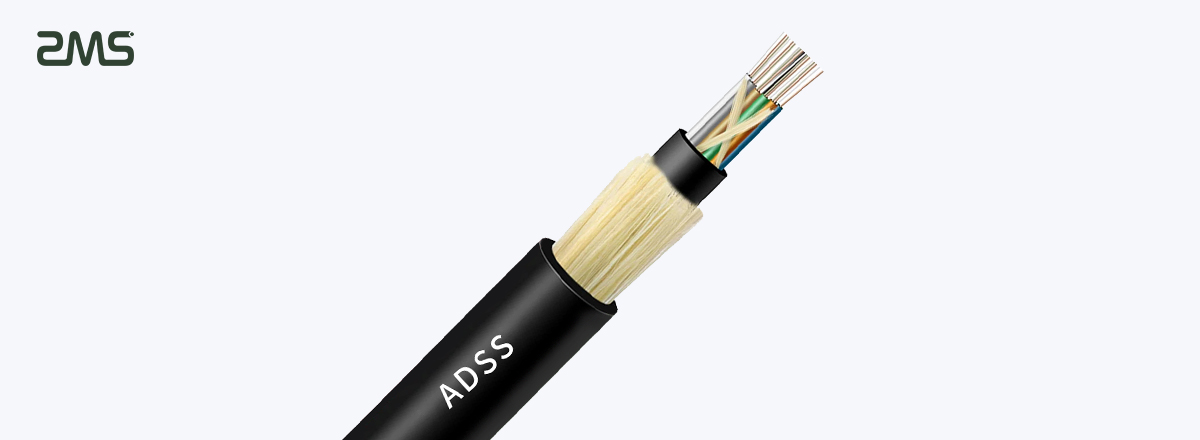ADSS cable
ADSS cable is made of optical fibers surrounded by a dielectric material (non-conductor), which eliminates the need for metal conductors or resistance elements such as steel wires.
The dielectric material also provides insulation to protect optical fibers from electrical interference. The cable can thus be suspended directly from poles or towers, which can reduce the cost and complexity of installation compared to other types of fiber optic cables.
ZMS ADSS cable has a unique construction, good insulation, high temperature resistance and high tensile strength. They work reliably and excellently in their applications.
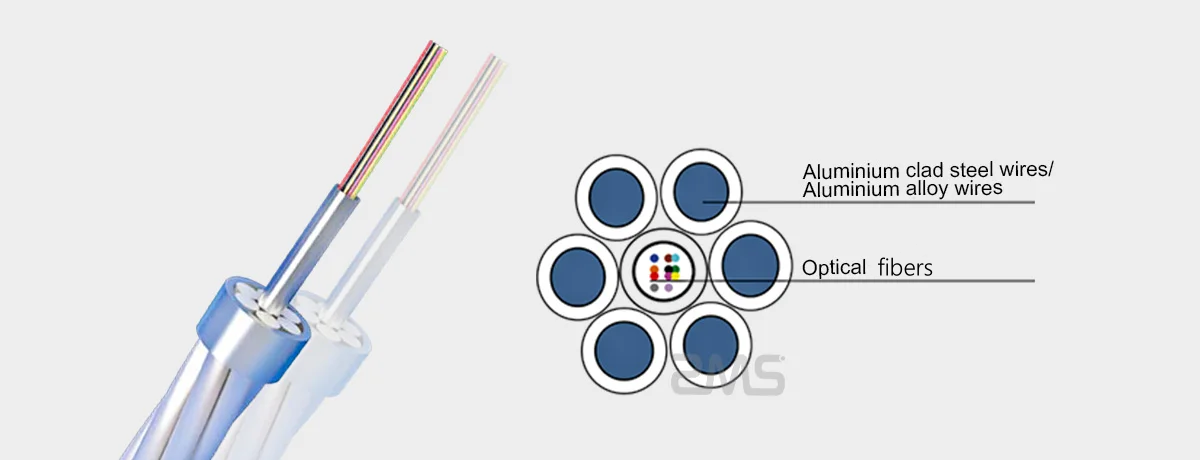
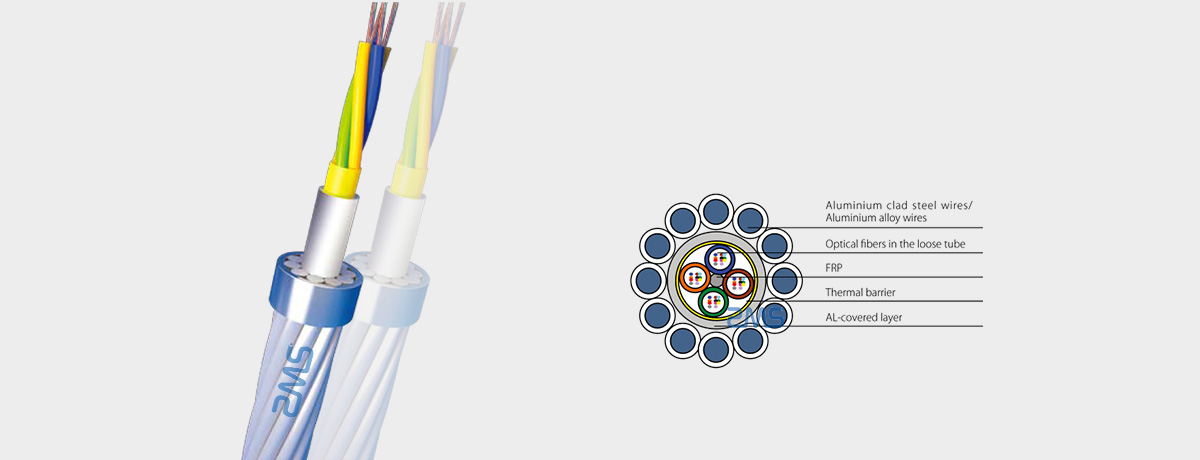
Description of ZMS ADSS
ADSS cable’s full name is All Dielectric Self Supporting Cable, which is also called non-metallic all-dielectric self-supporting fiber optic cable.
It is widely used in power communication systems for its advantages of large fiber core number, lightweight, no metal (all-medium), and can be set up with power lines and towers, generally without power outage construction.
The cable is a composite fiber optic cable made by winding the fiber bundle around the central reinforcement, and then protected by insulation, waterproofing, reinforcement, sheathing, and other protective measures.
ZMS ADSS fiber optic cable has the characteristics of full dielectric, metal-free, non-conductive, small cable diameter, high tensile strength, low coefficient of linear expansion, wide temperature adaptability, etc.
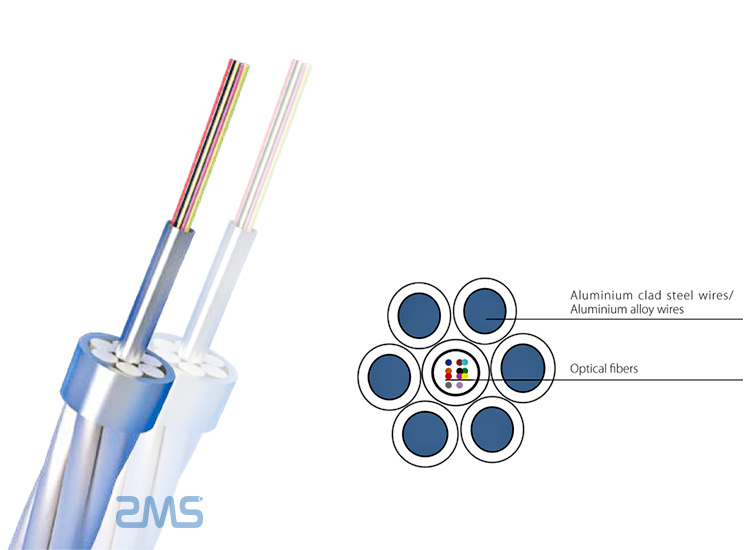
ADSS – Structure en Tube Central
The core tube structure of an ADSS fiber optic cable is usually made of a material such as plastic or glass, and serves to protect optical fibers from mechanical and environmental damage.
Structure:The central tube is usually composed of one or more individual tubes, each containing a certain number of optical fibers. He is also generally surrounded by resistance elements, such as aramid yarns or glass fibers, to provide additional mechanical protection and help maintain cable shape.
Features :This type makes it possible to obtain longer fiber lengths. It is best deployed for large-scale applications.
| parametric | Outer diameter of fiber optic cable(mm) | Weight(kg/km) | Cross-sectional area of fiber optic cable(mm²) | tensile strength(kN) | coefficient of expansion(1/℃) |
|---|---|---|---|---|---|
| F4 | 11.6 | 109.9 | 105.68 | 9 | 9.32 |
| F6 | 12 | 116.8 | 112.7 | 16.2 | 5.28 |
| F9 | 12.3 | 122 | 117.9 | 21.6 | 3.78 |
| F11 | 12.5 | 127.1 | 123.01 | 27 | 2.8 |
| F13 | 12.8 | 132.2 | 128.19 | 32.4 | 2.12 |
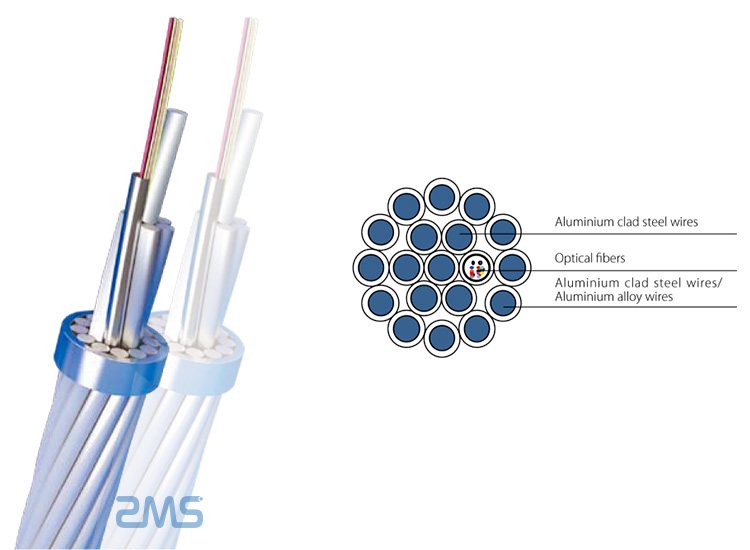
ADSS – Structure in Toron
Stranded structure is a type of cable designed to provide a safe and protective environment for optical fibers and to help ensure the long-term reliability and performance of the cable, in addition to providing better mechanical properties to the cable.
Structure:In a twisted structure cable, optical fibers are arranged in a loose tube made of a material such as plastic. These loose tubes are then surrounded by a layer of resistance elements,to provide mechanical protection of the fibers. The resistance elements are covered with a UV resistant coating to protect them from environmental damage.
Features: This type makes it possible to obtain longer fiber lengths. It is best deployed for large-scale applications.
| Outer diameter (mm) | Working voltage (kN) | Weight(kg/km) | Length of break (kN) | Module d'élasticité CSA(kN/mm²) |
|---|---|---|---|---|
| 12.5 | 1.5 | 125 | 10 | 7.6 |
| 13.0 | 2.25 | 132 | 15 | 8.3 |
| 13.3 | 3.0 | 137 | 20 | 9.45 |
| 13.6 | 3.36 | 145 | 24 | 10.8 |
| 14.5 | 5.4 | 164 | 36 | 13.6 |
How to Install ADSS Cable ?
There are several steps to installing an ADSS cable, especially planning, preparation and execution of the installation. Here's a look at the process :
Planning : This involves determining the route of the cable, identify potential obstacles and dangers, and assess the condition of power line pylons and other structures.
Preparation : This involves obtaining all the permits, necessary equipment and tools, as well as training the personnel who will participate in the installation. The pylons must also be prepared by cleaning them and checking that they are not damaged..
Towering : This step involves preparing the cable for installation. The fibers are placed in a central tube and covered with a protective coating. Ensuite, the cable is stranded into a single bundle with several fibers inside.
Hardware installation : This step involves attaching the equipment to the power line pylons. This includes installing supports, pliers and other equipment to secure the cable in place.
Cable routing : This step involves pulling the cable through the brackets and clamps and attaching it to the pylons. The cable is stretched and secured in place using specialist equipment.
Testing and commissioning : Once the cable is installed, it must be tested for any defects or damage. This step involves performing various tests to ensure that the cable is working properly and transmitting data correctly.
It is important to note that the installation of ADSS fiber optic cable must be carried out by professionals and with all safety measures in place. This is technical work, which also requires specific tools and equipment, and proper training is essential.
ZMS company service
Soverproduction service
ZMS has a wide range of cables and conductors. We provide thoughtful services and professional project solutions to everyone who needs them.
Squality certification services
ZMS cables are manufactured in accordance with GB standards, IEC, BS, NFC, ASTM, DIN and other international standards. Our technical team can customize cable products that meet your requirements based on your needs.
Sprofessional customer service
ZMS provides free professional consultation services to provide you with one-stop project solution services and rapid product delivery solutions.
Sdelivery and shipping services
ZMS provides high quality cables, but also good delivery solutions. While ensuring the safety of product delivery, we provide the best packaging and transportation solutions, thereby significantly reducing customers' transportation costs.
Epackaging of ZMS
ZMS cables are packaged in wooden spools, corrugated cardboard boxes and reels. Cable ends are sealed with BOPP self-adhesive tape and a non-hygroscopic sealing cap to protect cable ends from moisture. We can print the required markings on the exterior of the drum using a waterproof material, according to customer requirements.


